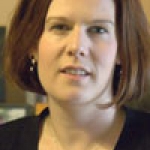
Mr. David M. Dombrosky
Cultivating Citizen Critics
Posted by Oct 07, 2010

Mr. David M. Dombrosky
For years, I have heard the lament for the rise of “citizen critics” –individuals who use blogs, social networks and other social media tools to share their reviews of performances, exhibitions, films, etc. I have listened to a number of artists, directors, curators, and other arts managers bemoan the replacement of “true” cultural critics in traditional media with these self-published citizen critics. The complaints typically revolve around a perceived lack of credentials and lack of understanding for the discipline.
While I, too, bemoan the loss of criticism in much of today’s traditional media, I must point out that citizen critics are not new. In fact, they have been around for as long as there has been art about which to have an opinion. To be blunt, we are all citizen critics. Have you ever told someone your opinion about a work of art, a concert, a performance, etc.? Of course, you have. We all have. And more of us are sharing our opinions with each other (and the world) thanks to rise of the social Web.
In August, a brouhaha erupted online between two bloggers and an actor from Canada’s Teatro la Quindicina in Edmonton, Alberta after one of the bloggers wrote a critical review of a play in which the actor appeared. Aside from serving as a case study in how NOT to deal with citizen critics, this online fracas brought to the surface a disdain held by many artists and administrators.
The reality is that citizen critics are not going away. So rather than lash out at them or quietly complain about them, why don’t we identify ways in which our organizations can cultivate them?
Read More






 The Writer’s Center has been around since 1976. It has a large following in the greater Washington DC area and, increasingly, nationally (in 2009, Poets & Writers Magazine, a leading trade magazine in our field, named us one of eight “places to go outside academia” to take creative writing workshops). Over the years, TWC has nurtured the careers of many writers, from
The Writer’s Center has been around since 1976. It has a large following in the greater Washington DC area and, increasingly, nationally (in 2009, Poets & Writers Magazine, a leading trade magazine in our field, named us one of eight “places to go outside academia” to take creative writing workshops). Over the years, TWC has nurtured the careers of many writers, from 






